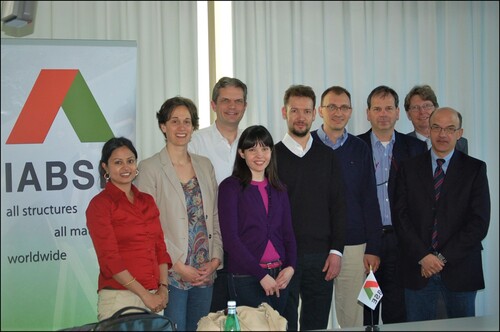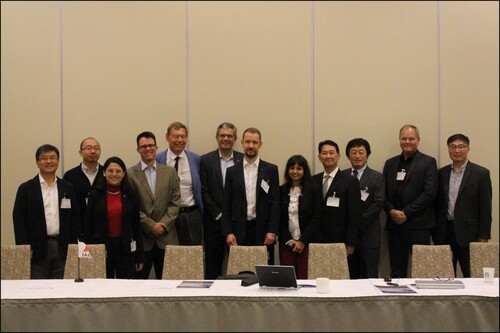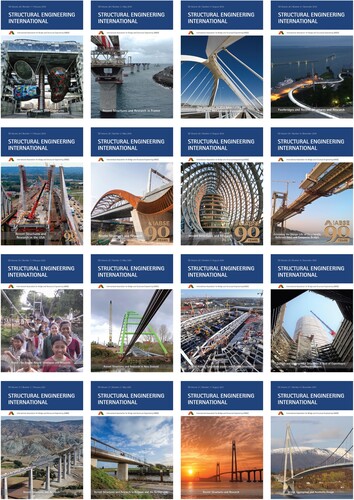I still vividly remember how then-Chairman Bert Snijder approached me at the enjoyable setting of the 2012 IABSE Congress in Seoul to ask for my interest in becoming the Chairman of the Editorial Board of Structural Engineering International (SEI). At that time I had already served in the Editorial Board for three years and knew the paper review and typesetting processes quite well. However, I knew that taking over responsibility for the journal’s strategy and overall production would become a much more challenging and time consuming endeavour. Whilst that proved true, it turned out to be one of the most gratifying experiences of my professional life so far. The joy of seeing a new issue of our journal being printed and shipped to IABSE members around the world easily outweighs any personal sacrifices. In the following I would like to share some of the experiences, some insights of operating SEI and some reflections on its past few years.
A major milestone for SEI that kept the Editorial Board busy for most of my first year as Chair was the transition of the journal’s publication processes to Taylor & Francis (T&F). Previously having been typeset and published from within IABSE’s organisational resources, IABSE had decided in 2017 to outsource SEI’s publication to a professional publisher. This promised several logistical, managerial and financial benefits and substantially reduced SEI-related risks to the Association, yet came with the expectation of dramatically reducing Zurich-based SEI staff and external typesetting resources. As a result, we had to completely re-organise the responsibilities and adjust some proven processes to T&F standard procedures, including new communication channels with a great number of UK-based colleagues who, in turn, are responsible for many other (and quite different) journals. The fact that this transition has been mostly unnoticed by members because we published SEI in time and without any loss in quality is testament to the success we have had in implementing it. I would like to take this opportunity to thank everyone involved in this process (you know who you are!).
Today, the transition is seen as a success story by IABSE leadership and for the past three years we have been able to harvest the benefits of the T&F transition in terms of reliable publishing services, robust logistical support, useful statistical journal performance assessment and, importantly, a substantially increased visibility of SEI outside of the IABSE community facilitated through T&F marketing activities. One change we have been very pleased with is a dramatic increase in paper downloads and a reach of SEI well beyond IABSE membership circles. This has certainly contributed to the substantial increase in paper submissions and a larger geographical as well as topical footprint of articles.
What continues to make SEI special is the healthy balance of high-level scientific papers and technical reports on cutting-edge structures, making its content highly relevant and entertaining to read for ambitious structural engineers worldwide. As a result of the increased number of high-quality submissions, SEI volumes have become thicker and we have published almost 600 pages per year even though we have become substantially more selective in the review process. We work hard to conserve the journal’s unique identity whilst also remaining relevant for key scientific papers and see steadily improving journal metrics – for 2020 SEI achieved an impact factor above 1.0 for the first time in its history.
The year 2020 presented us with the challenge of keeping SEI publishing up during the COVID-19 pandemic. People’s lives had been turned upside down and work had to be organised around difficult personal circumstances and in dramatically changing work environments. The printing and distribution of SEI had to overcome global distribution problems. However, due to the enormous dedication of everyone on the team we kept the journal's processes up uninterruptedly and benefitted from the high degree of digitalisation of SEI communications and publishing processes. After all, SEI has had online Editorial Board meetings since 2007 (the year Steve Jobs introduced the first iPhone!) and the paper submission system ScholarOne was adopted back in 2009!
Coping with the pandemic was yet another example of how SEI is tightly woven into IABSE’s network of dedicated colleagues around the world. It is often overlooked that SEI is much more than just the journal published by IABSE. It acts as glue between the Association and its members in a way that I think is truly unique in the structural engineering community worldwide. Whilst it is open for anyone to publish in, Editorial Board members are well connected IABSE members, we have a group of SEI Correspondents from most member countries, the best papers are celebrated by IABSE awards and the publication process relies heavily on author and reviewer input from IABSE members. In this way, it reflects the immense knowledge embodied in IABSE and acts as a platform to share and advance knowledge. Everyone on SEI’s production side appreciates the constant interaction with IABSE colleagues through critical reviews, specialist input, written reader feedback and ideas generated during personal meetings. The Chair of the SEI Editorial Board is also a member of IABSE’s Technical Committee and this provides further important integration in technical activities such as that of the Task Groups, within each Commission.
Particular highlights of SEI are the Special Issues that are the result of careful considerations in the Editorial Board. Over the four years of my tenure we have produced special issues on topics such as the Value of SHM, Footbridges, Humanitarian Bridge Engineering and Tunnels which have become landmark publications on topics important to our industry. Further, the traditional country specific issues provide amazing insights into the current activities in the country of the IABSE Congress and as such act as a further link to the Association’s activities.
As I conclude this reflection of my tenure, I want to share one benefit of leading SEI that I was not actually aware of when Bert approached me 9 years ago. Besides asking colleagues to contribute the editorials, the Chairman is also responsible for selecting the cover image for each issue. These are taken from, or related to, papers published in the respective issues and I have very much enjoyed the responsibility of selecting them together with colleagues from our Editorial Board. This is why I am considering to have a collage of the covers of my tenure (see below) printed in poster-size as a memory of the last four years. I would like to thank everyone who has been involved with SEI in the past for your support of our journal and wish the new team around Ana Mandic all the success in leading SEI into the future!



